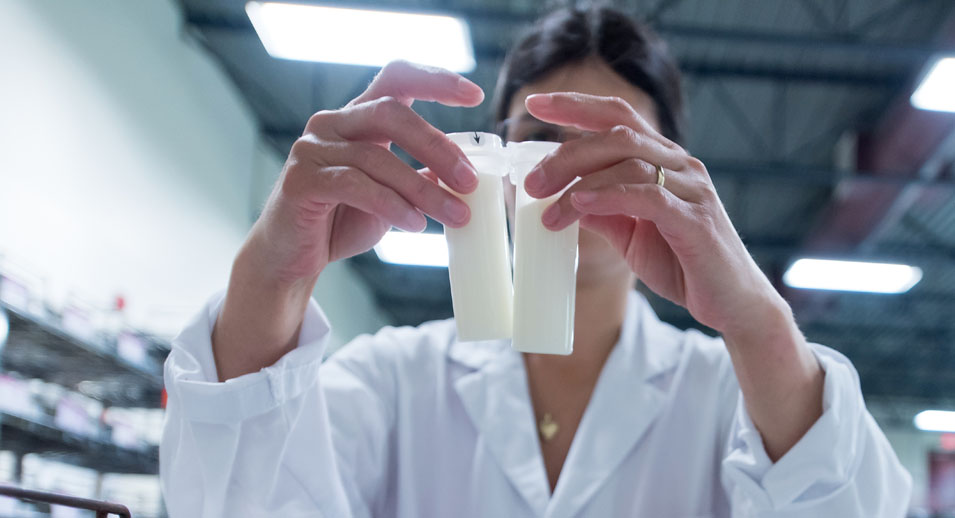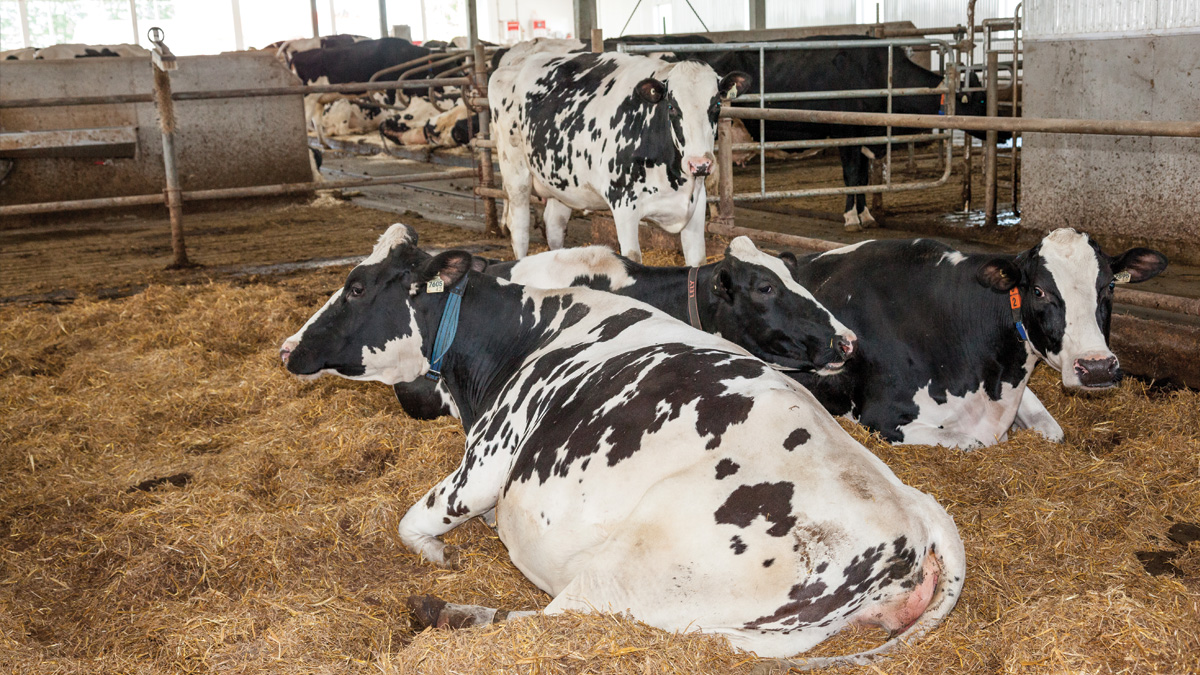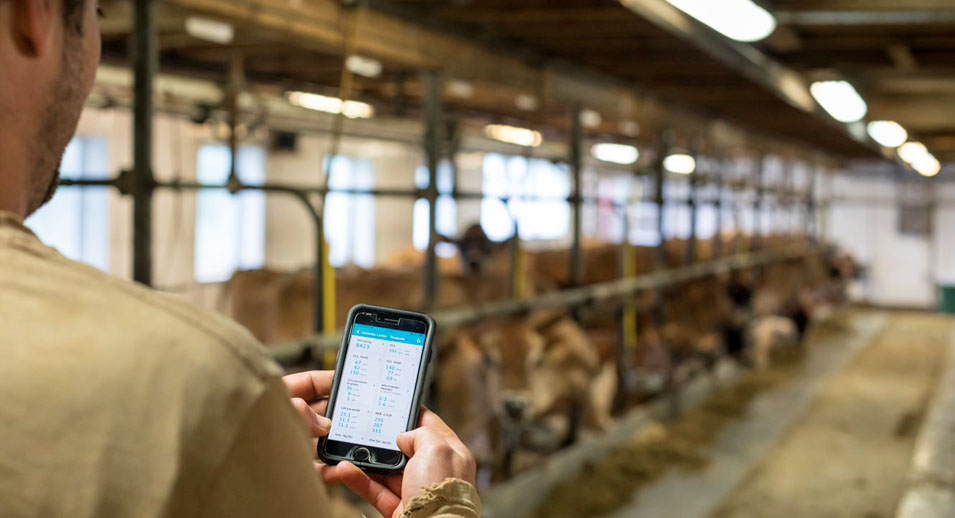Five key factors impacting transitions
- November 10, 2021
- Le Producteur de Lait Québécois Magazine
Here are five key factors impacting transitions, as outlined by researchers in the field such as Dr. Ken Nordlund (University of Wisconsin) and Dr. James Drackely (University of Illinois).
- Adequate Bunk Space
Lack of Adequate bunk space has been found to be the most important factor influencing poor transitions. Ideally, we want 30” of bunk space/cow with 80% stocking density at the bunk for all dry cows. Realistically, we must make sure all dry cows can get up to eat at the same time. All producers on this project recognized that improving bunk space was important to improving transitions, but not all farms were able to achieve the desired numbers.
- Cow movement and social stress – reducing stress related to group changes
Proper cow movement so that we reduce the stress related to group changes is crucial to strong transitions. Where possible cows should be moved in groups, not one at a time, and movement or groups changes should take place once a week to minimize occurrence of stress caused by re-building the hierarchy within the group.
Making sure the dry cows are moved into the dry cow program early enough to allow an adequate dry period (50-60 days) is important. If a farm has a two-group dry cow, Dr. Dorrance likes a 60-day dry period to ensure the cows have time to adapt to the two group move. For the two-group dry cow, we want cows entering the up-close group 21+ days before actual calving (and the heifers 28+ days). Corbett (2017 AABP) observed from over 6,000 live births, that >70% of cows and >55% heifers (Holstein) did not reach 280 DCC (day carrying calf/days gestation). With this in mind, if the goal is 21+ days for cows (28+ days for heifers), for a once a week move, moving the cows to the up-close at 252-258 DCC and the heifers to the up-close at 245-251 DCC was recommended.
- Stall size and/or Sq. Ft. of the pack
- Comfort of the lying surface (stall or pack)
Both these are big factors in managing the risk of poor vs good transitions. Cows that are overcrowded and uncomfortable are at higher risk of poor transitions. This should not be a big surprise. An Excel Dry Cow Calculator was used to determine number of dry cows and dry heifers each farm should plan for. This Dry Cow Calculator is a very useful tool to calculate the potential space needed for the dry cows and heifers. The goal is for dry cows/heifers on bedded packs to have 120 sq.ft/cow of actual lying space (not including the feed alley). If the feed alley is part of the calculation, then the aim is for 150 sq. ft./cow. The packs must be well-managed, so that they are well-bedded, comfortable, and clean. For stalls, we want stalls that pregnant cows and heifers can easily lie down in and get up. We want stalls, where the beds are comfortable, clean, and have good traction to avoid slipping. For more info on stalls and packs, visit:
- Dry Cow Ration
This is often the first and only thing that is changed in a herd where transitions are an issue. Diet may be the issue, but not always. Sometimes, it is the only thing that can be changed. Adjusting the ration, but not paying attention to the other important factors, is often what we see and then of course, the diet change may not give us the desired results. To optimize the dry cow diet and dry matter intake (DMI), it is important to have a complete analysis of all forages, to properly account for their protein, energy and mineral content. Other factors, like forage chop length is also important to reduce the risk of sorting. For a two-group ration, balancing the far-off and up-close diets with respect to energy, protein, vitamins, and minerals is crucial to help decrease the risk of milk fevers, retained placentas and ketosis (Type II ketosis– often due to excessive energy intake in the far—off period) and promote good 1st milk colostrum volume and quality.
For 1st milk colostrum, the goal is to reach a colostrum production of 6-8 liters for the heifers and 8-10+ liters for the cows. Also, the first milk colostrum should be 22%+ on the Brix (refractometer reading) and should be of this quality 90% of the time. If we have these 1st milk colostrum numbers, this is another good indicator of strong and successful transitions. Dr. Dorrance also highly recommended administering a CRC Rumensin bolus to all Holstein animals (cows and heifers) 2-4 weeks before calving.











